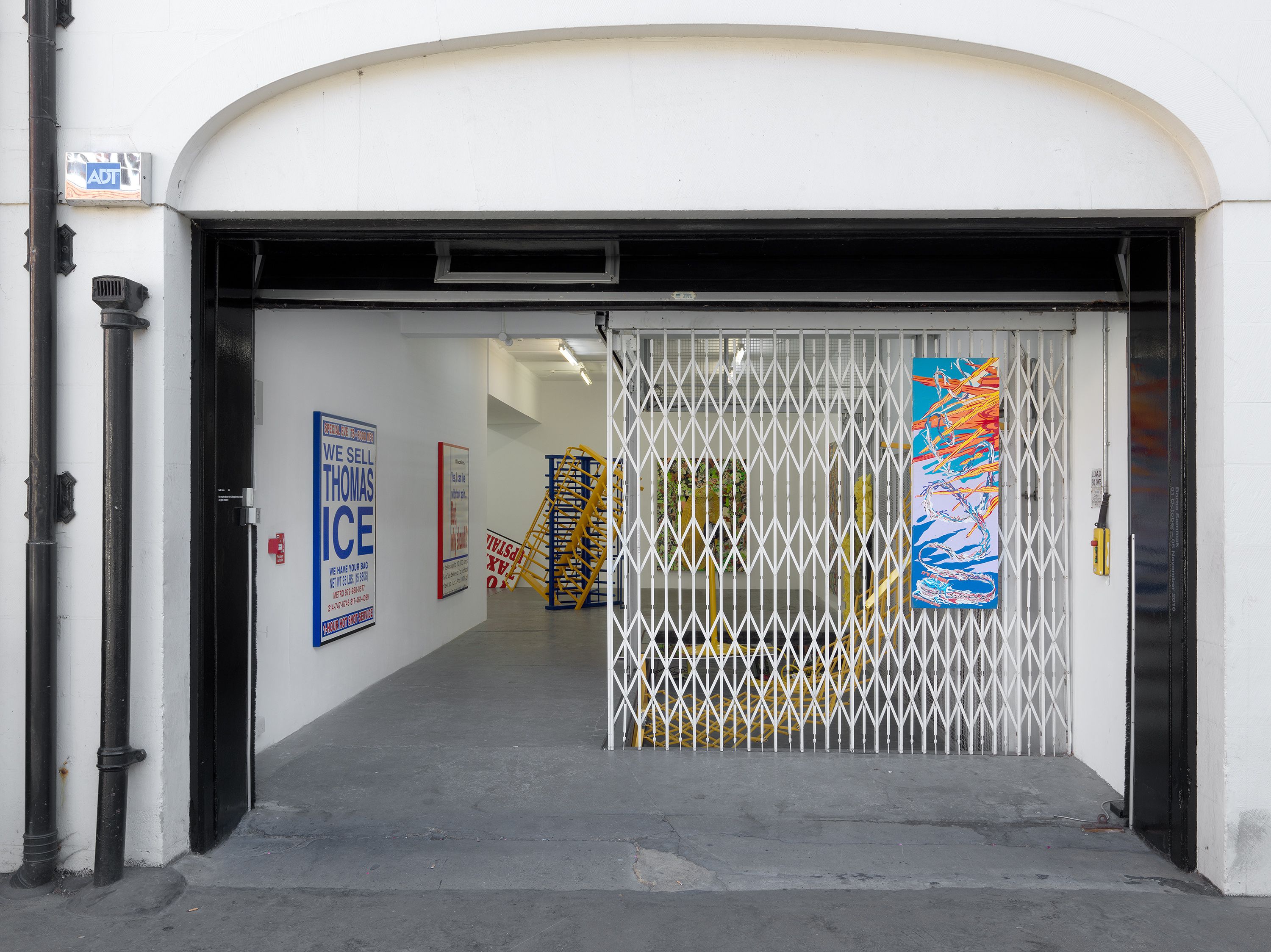
This October, Sadie Coles HQ presents an exhibition by American artist Borna Sammak. Sampling from the urban fabric of his surroundings and from the realms of film, TV and YouTube, Sammak embeds and encrypts the stuff of daily life in his works. Through a combination of sculpture, painting and video, he splits and recombines mundane objects and texts – signs, slogans, clothes or cartoons – into compressed metaphors and dense patterns. Through these, currents of awkwardness, humor and doom run in parallel.
Central to the exhibition is a large-scale sculpture, Two Full Height Turnstiles Stuck In Each Other (2016). According with the blunt description of the title, two full-height turnstiles have been threaded together, one spliced diagonally through the other to produce a nexus of steel bars and circular axes. Seemingly locked in an awkward clinch, the two cage-like structures become heavy-duty ‘readymades’ (urban variants of Marcel Duchamp’s bottle racks). The meshed turnstiles equally evoke the complex designs of Constructivism, in particular the spiraling structures of Vladimir Tatlin’s unrealized Monument to the Third International (1919-20). Out of utilitarian devices, Sammak engenders a sculptural language that is poised between allusive form and absurd content.
This process of imbuing everyday objects with multiple – even contradictory – resonances, defines Sammak’s approach to the found texts and images which litter his works. In three paintings, he has reproduced adverts and notices seen in New York, using vinyl transfers and enamel paint. Sparingly presented against white backgrounds, the arrangements of text echo the artful simplicity of conceptualist ‘word paintings’; but in place of wry or recondite statements, we find fragments of desultory reality. And yet Sammak’s appropriations effect a subtle transformation, underscoring the signs’ inherent oddness or ambiguity. A slogan reading “We sell Thomas Ice” – a common sight in the windows of New York’s delis – becomes strange through repeated reading. Thomas Ice is the company being advertised, but by another reading “Thomas” is also us - the would-be buyer or consumer.
In previous works, Sammak has used the institution of the deli as a metaphor for his own practice, in terms of its promiscuity of sources and subjects, observing that: “Delis don’t carry specific brands, they just carry ‘stuff’”. Through techniques of cropping, enlargement and collage, Sammak destabilizes or distorts the meanings of everyday ‘stuff’. In Camo Cargo Shorts (2016), the capacious pocket of cargo shorts – printed with a camouflage pattern – has been realised on the scale of a tapestry in heat-pressed vinyl, T-shirt transfers and oversize embroidery. Transformed into a surreal portmanteau, the pocket and its variegated colours suddenly seem absurd – an unconvincing mimicry of combat gear, and a pretence of machismo.
Throughout his work, Sammak employs pastiche as both an aesthetic and critical mode. Slogans and catch-phrases – seemingly wrested from T-shirts, fridge magnets or car stickers – are set in a kind of freefall. The trite tagline “MY HUSBAND HAS AN AWESOME WIFE” appears beneath a winsome graphic of a deer: visual and verbal clichés pile up, producing a kind of excess of banality – bereft of any obvious outlet or referent. Elsewhere, a stock heat-transfer T-shirt graphic — printed with a derisive and war-happy 1600° weather forecast for Afghanistan – has been plastered with a cacophony of cartoons, graphics and buzzwords. Blotting out the original ‘bad joke’ of the T-shirt, cast-offs of western pop culture explode into an apocalyptic swarm.
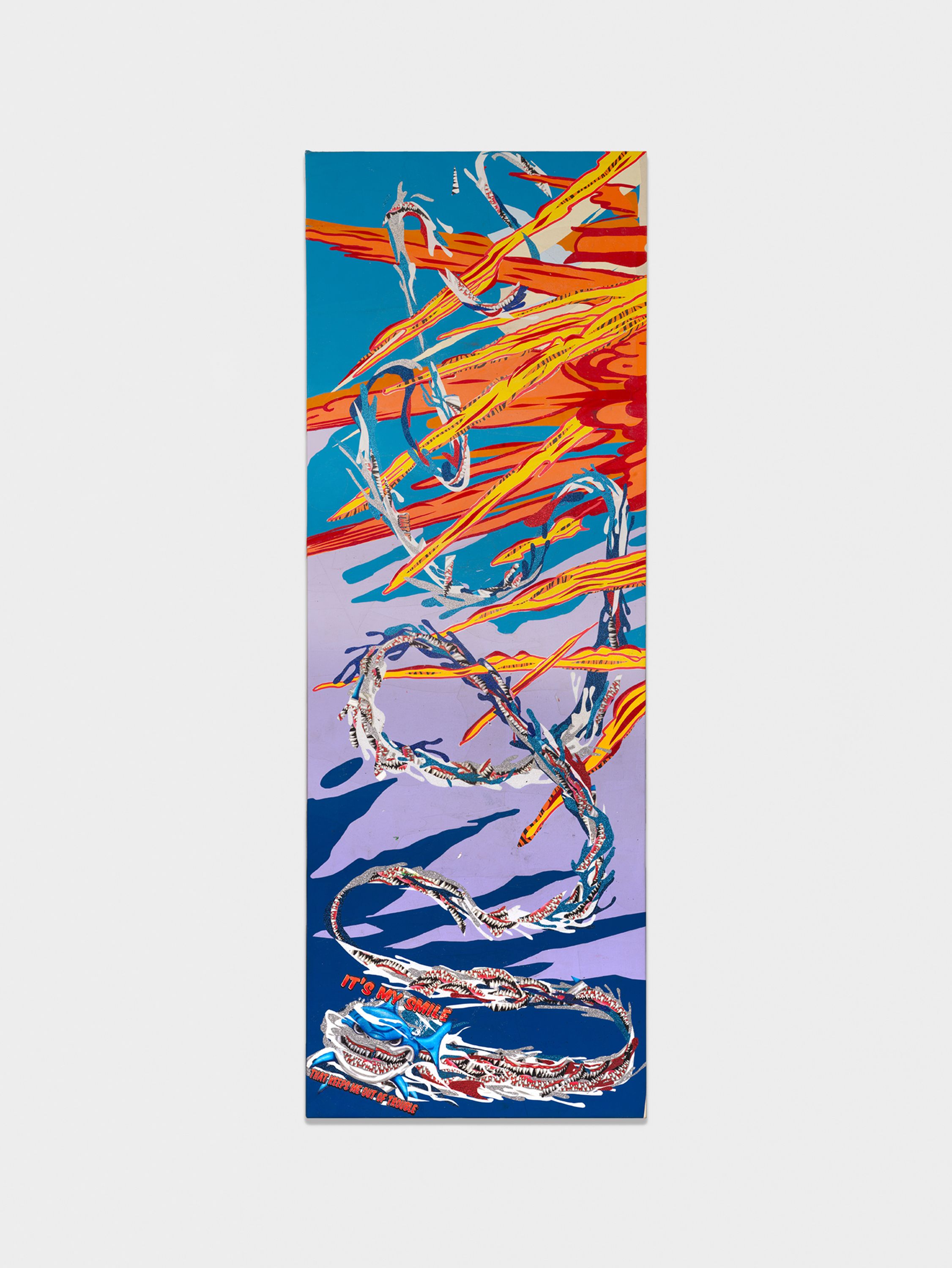
heat applied t-shirt graphics and vinyl on canvas
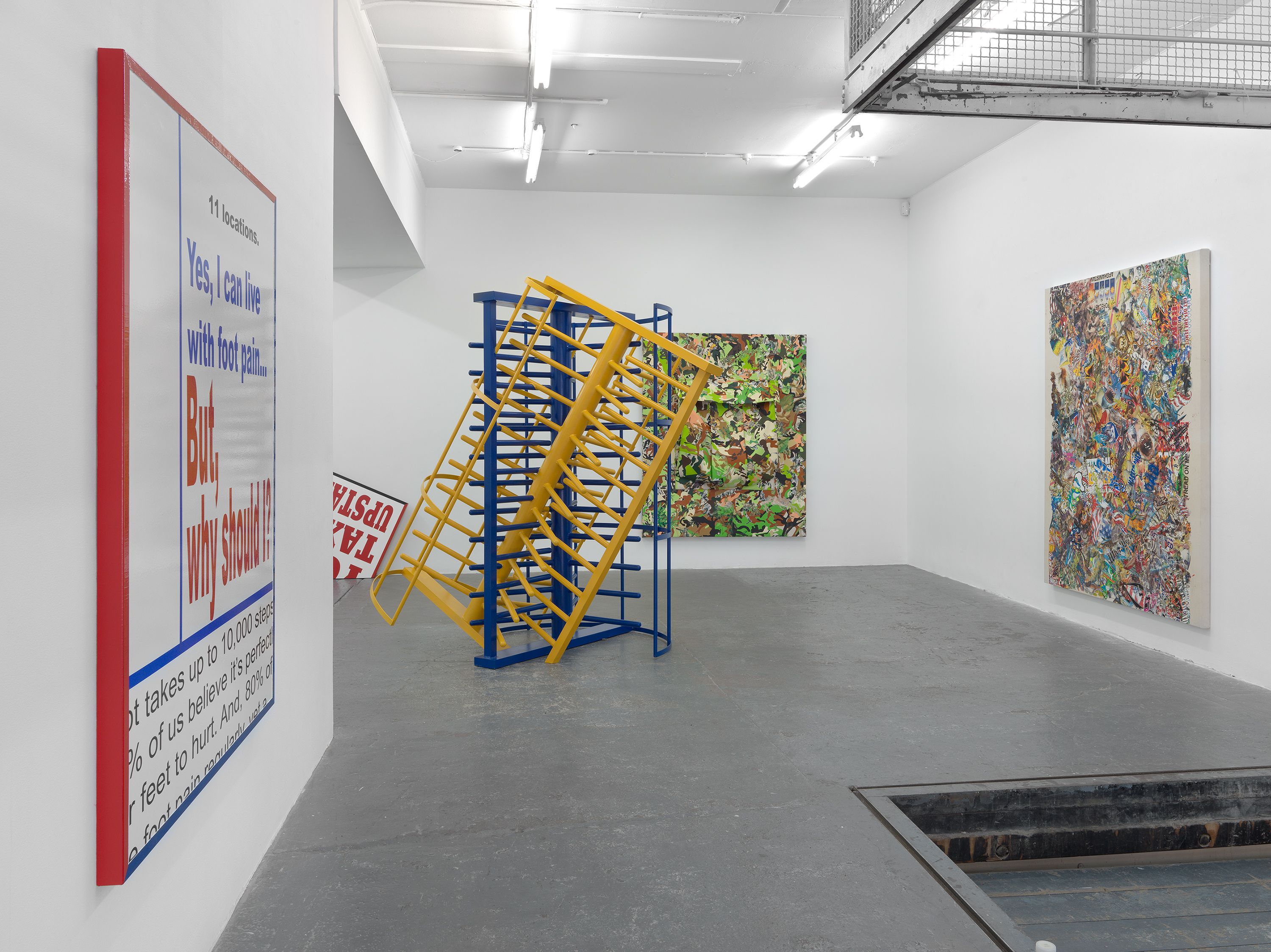
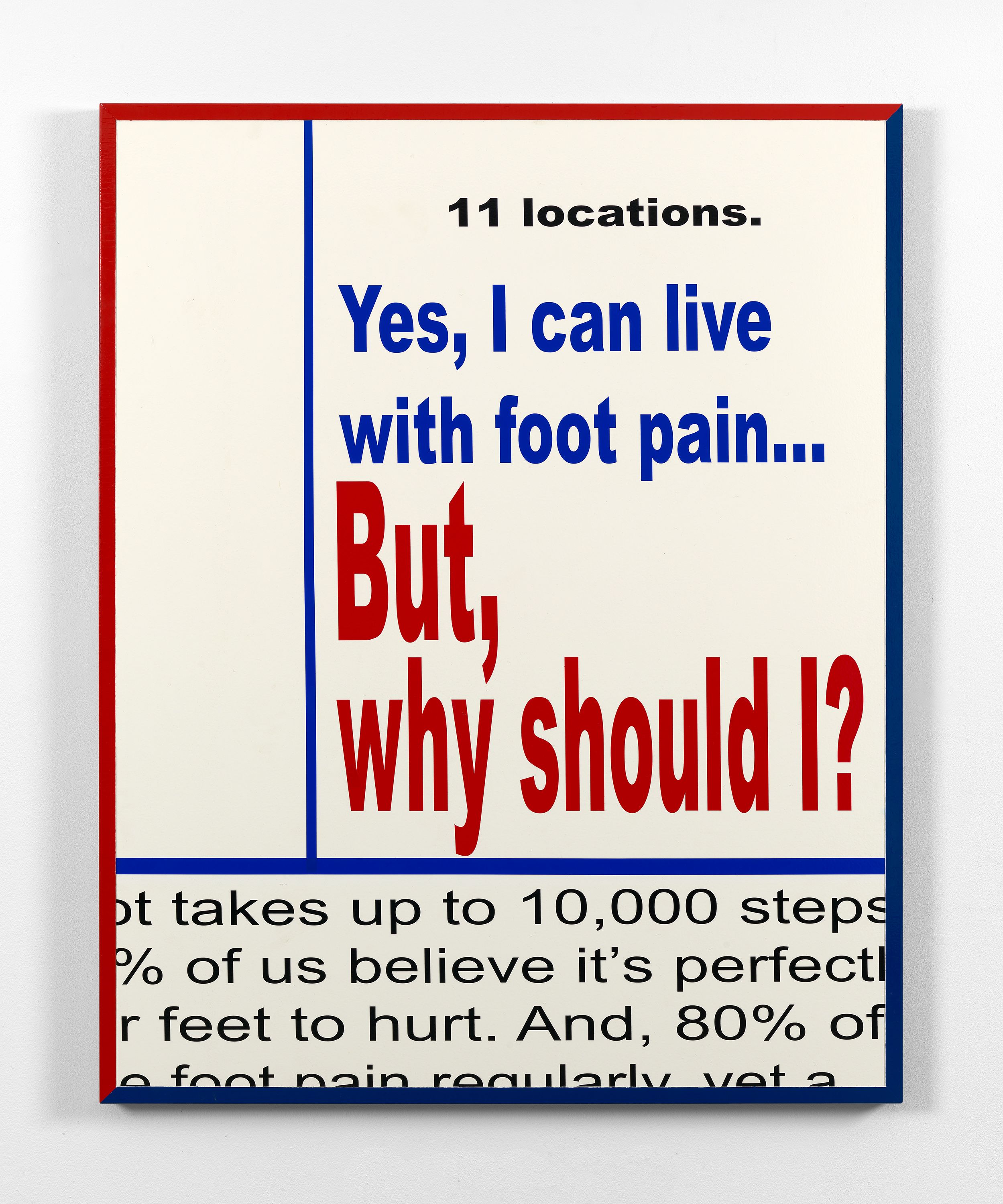
enamel paint and vinyl on steel and wood panel
60 x 48 in
152.5 x 122 cm
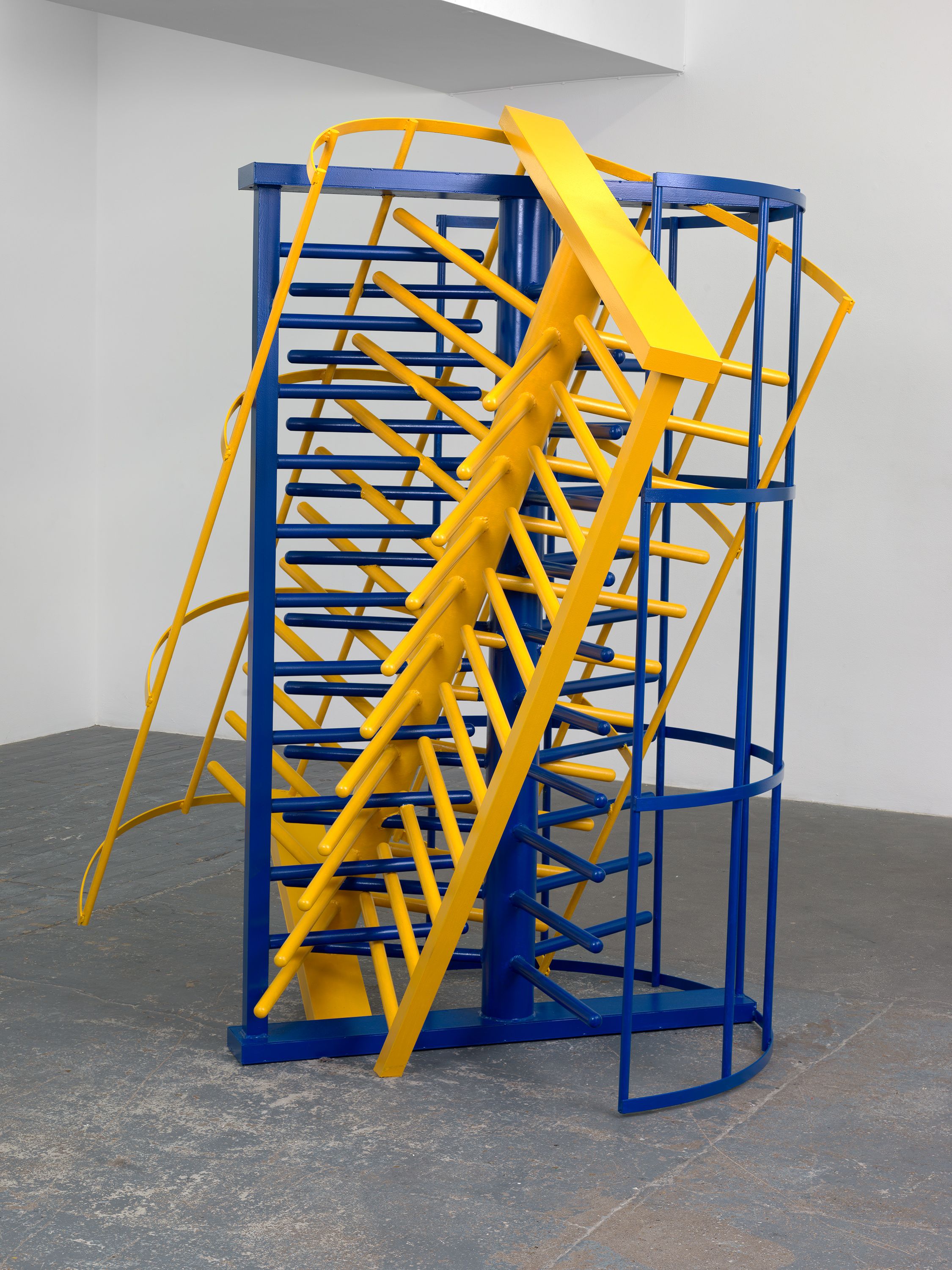
steel, paint
88.5 x 82.5 x 55 in
225 x 210 x 140 cm
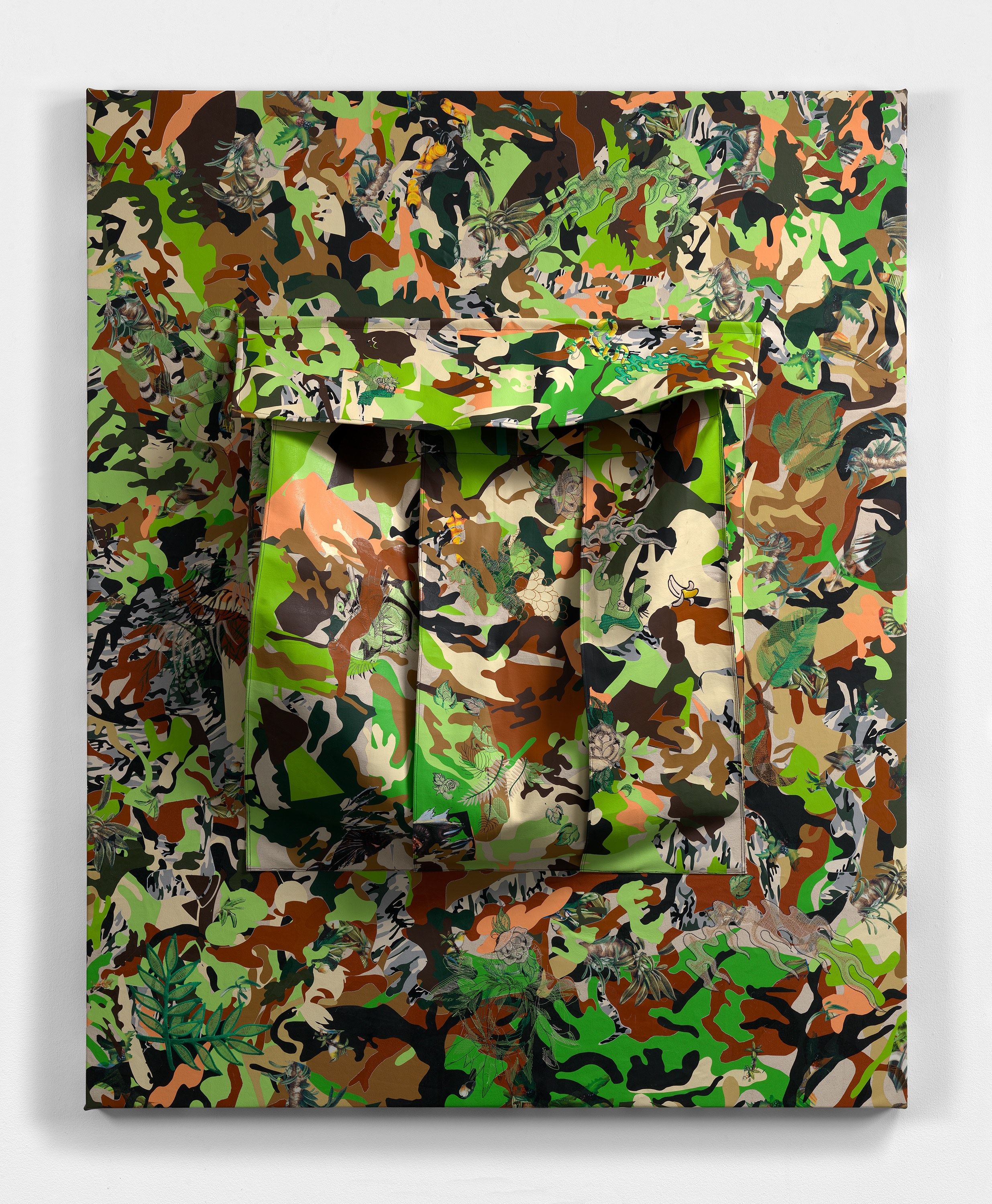
heat applied t-shirt graphics and vinyl on canvas
74 x 60 in
188 x 152.5 cm

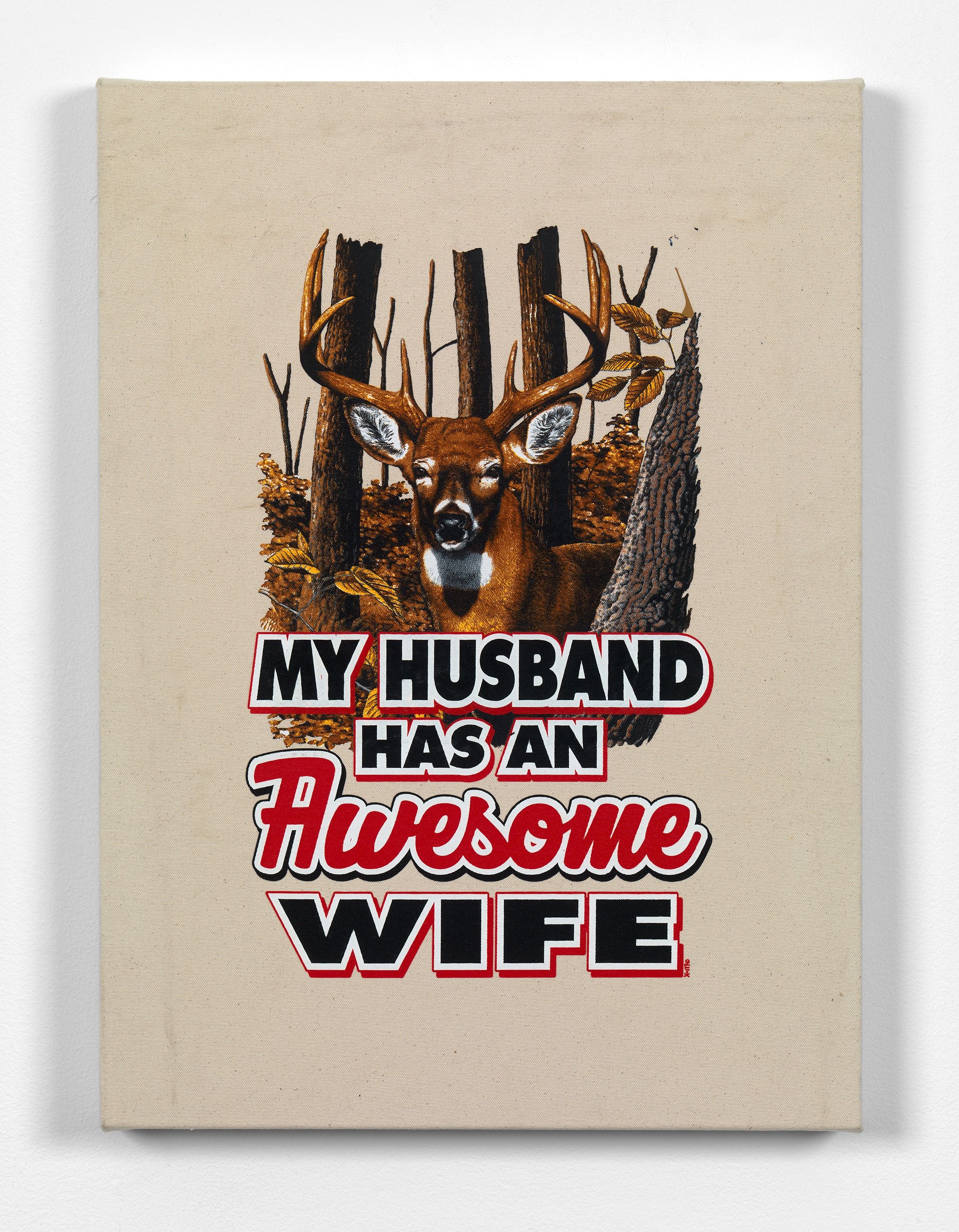
heat applied t-shirt graphics on canvas
26 x 19 in
66 x 48.5 cm
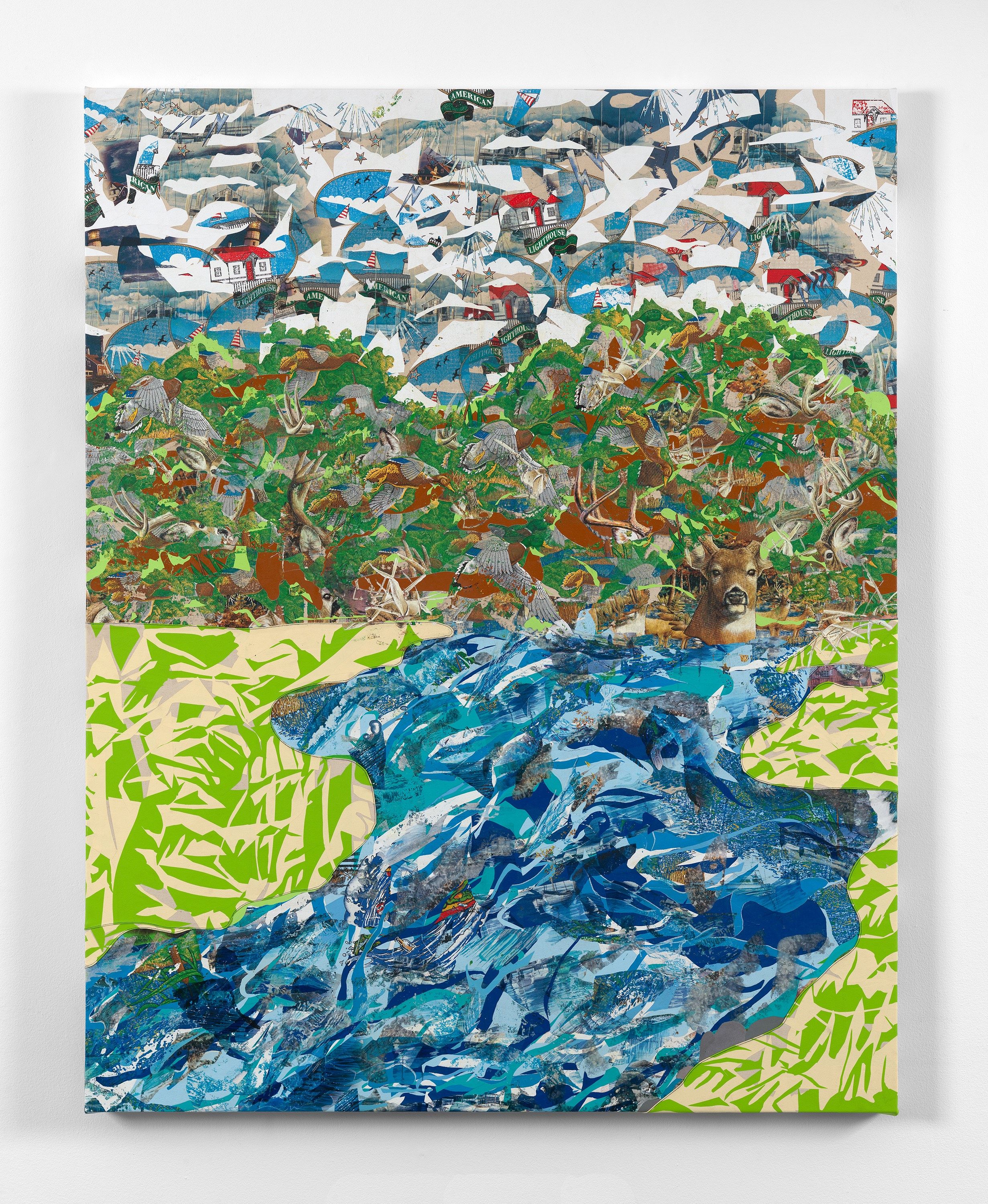
heat applied t-shirt graphics on canvas
64 x 51 in
162.5 x 129.5 cm

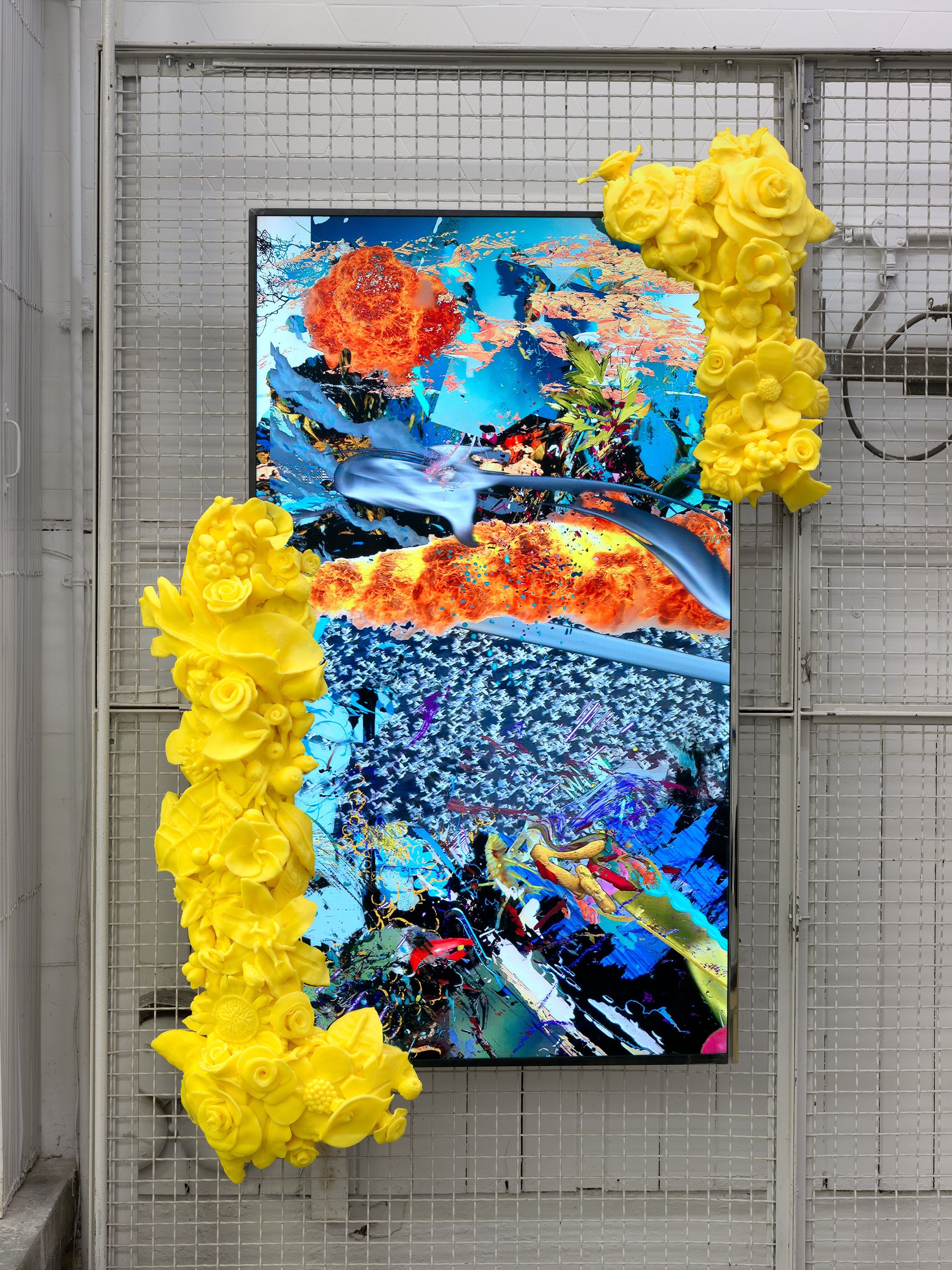
3140 x 2160 pixels, 30 fps.
30 seconds looped
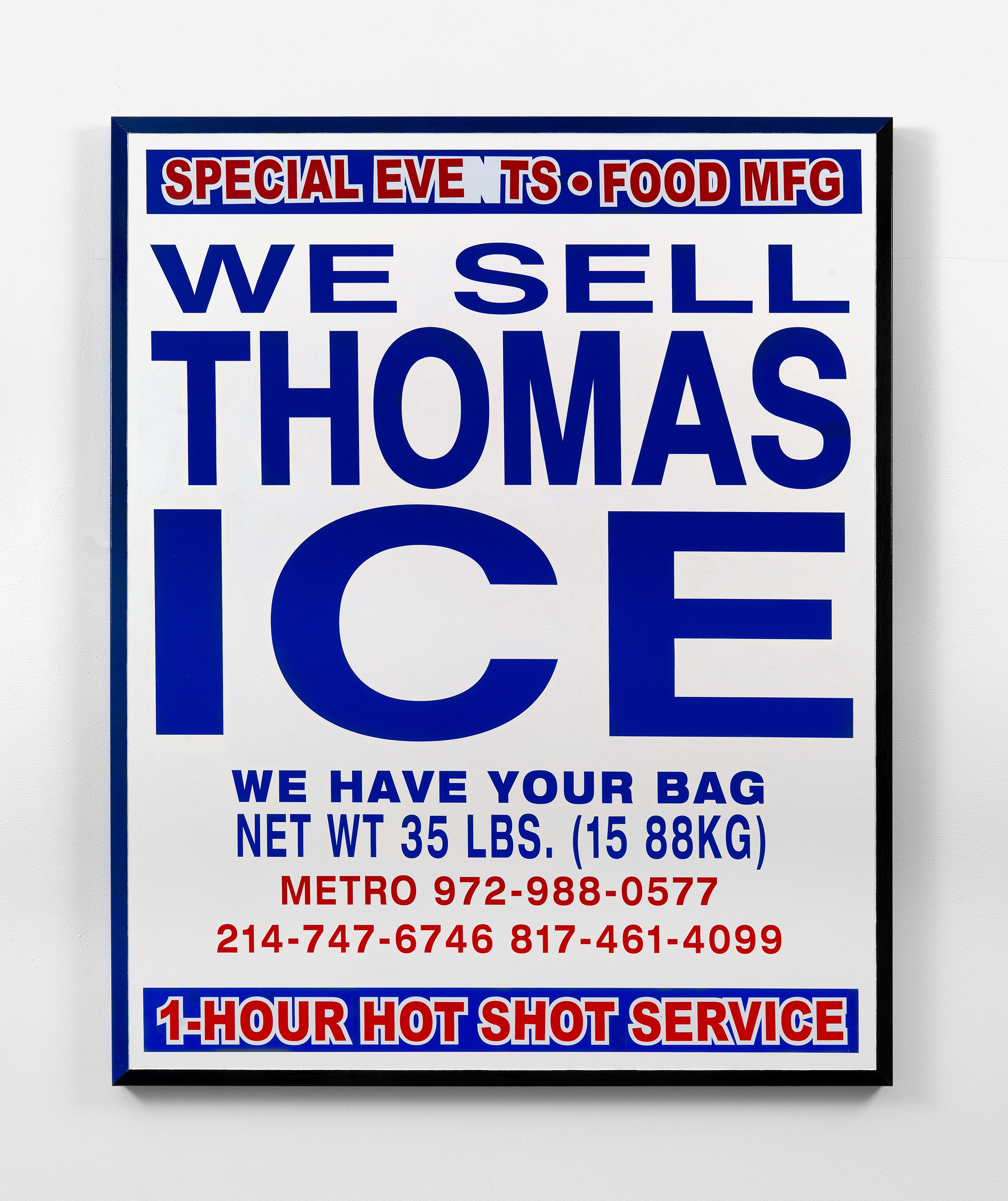
enamel paint and vinyl on steel and wood panel
60 x 48 in
152.5 x 122 cm